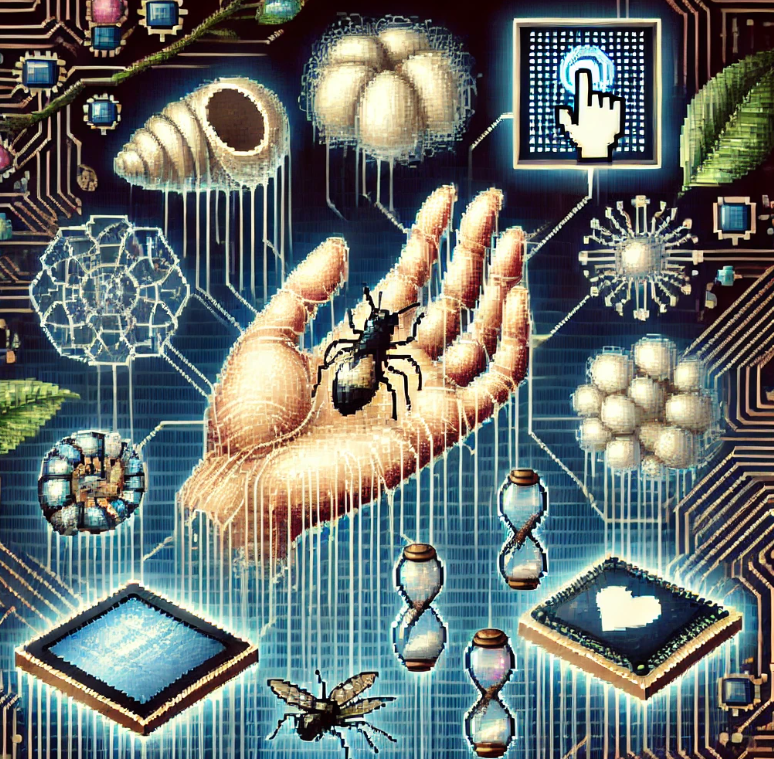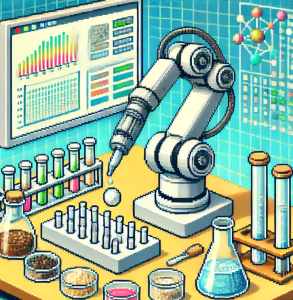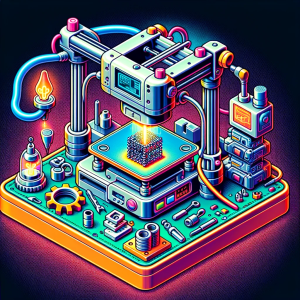
How Silk Could Power the Future of Electronics
Imagine a world where the delicate, shimmering threads of silk not only adorn our clothes but also power our technology. Silk—the same material used for centuries in textiles—is now on the cusp of transforming the electronics industry. Yes, you read that right: silk could be the future of bioelectronics.
A New Era for Silk
For more than 5,000 years, silk has been cherished for its beauty, strength, and versatility. But recent scientific breakthroughs are taking it to an entirely new level. Researchers have discovered that silk, specifically silk fibroin (SF), a protein derived from the cocoons of silkworms, can be engineered into a crystalline structure that may revolutionize how we build electronic devices.
Silk fibroin has long been admired for its biocompatibility, mechanical strength, and ability to self-assemble. However, scientists have struggled to control the material’s assembly, especially when interfacing it with flat, hard surfaces like those used in electronic devices—until now.
What Scientists Have Uncovered
In a groundbreaking study, scientists have developed a highly ordered, two-dimensional film of silk fibroin grown on a van der Waals (vdW) substrate—a type of material critical to next-gen electronics like transistors and sensors. Using advanced techniques like atomic force microscopy and molecular dynamics simulations, they found that this silk-based material forms neatly stacked layers, much like the nanocrystallites in native silk but on a more controlled, smaller scale.
This discovery is exciting because it opens up new possibilities for silk to be used in bioelectronics. The research shows that as silk fibroin self-assembles, it adopts a structure that can influence electronic properties. In other words, silk can now do more than make beautiful garments; it can interact with electronics in meaningful, innovative ways.
Silk as a Power Player in Bioelectronics
Why does this matter? In today’s world, the gap between living organisms and technology is closing rapidly. Bioelectronics is a field focused on creating devices that can interface seamlessly with biological systems, such as the human body. Imagine having a wearable device that not only monitors your vital signs but can integrate effortlessly with your skin. Silk, as a natural material that is already biocompatible and biodegradable, is the perfect candidate for such applications.
Silk-based electronics could become a game-changer in health technology. Researchers envision devices that can be implanted in the body and used to monitor health conditions, release medications, or even repair tissues—all without harming the surrounding cells. Unlike synthetic materials that can trigger immune responses, silk is gentle on the body.
But the implications don’t stop at healthcare. Picture sensors that biodegrade when they’re no longer needed, reducing electronic waste or flexible electronics that can wrap around surfaces and blend with the environment. Silk, with its unique properties, could make these ideas a reality.
How It Works: Silk’s 2D Transformation
So, how exactly do these silk films work? In simple terms, the researchers discovered that by manipulating the concentration of silk fibroin in water and placing it on a vdW substrate, the silk proteins begin to align themselves in a way that mirrors the crystalline structures found in nature. Think of it like building with Lego bricks: each silk molecule snaps into place, forming a highly ordered structure that’s both strong and flexible.
At lower concentrations, the silk molecules align themselves into a single layer. As the concentration increases, the molecules start forming multiple layers, creating a 3D structure that can alter the electronic properties of the material it’s placed on. The process is delicate, but once it’s started, the silk grows in precise, controlled ways, stacking layer upon layer like sheets of paper.
This meticulous growth is what makes silk films so exciting for electronic applications. These films can influence the surface potential—the electrical property that determines how current flows through a material. By controlling the thickness and orientation of the silk layers, scientists can essentially “tune” the electronic properties of the substrate beneath, making it more or less conductive depending on the need.
Real-World Impact: Why You Should Care
Okay, so silk can make electronics better. But why should you care? Well, the impact of this research extends far beyond the lab.
Take, for example, the problem of electronic waste. Each year, millions of tons of electronic devices end up in landfills, leaking harmful chemicals into the environment. But imagine if we could replace many of those components with materials that break down naturally over time. Silk-based electronics could offer a sustainable alternative, reducing our dependency on synthetic materials and cutting down on waste.
Then there’s healthcare. With the rise of wearable and implantable technologies, having a material that is both safe for the body and capable of complex functions is essential. Silk’s biocompatibility and flexibility make it an ideal candidate for creating devices that don’t just sit on your skin but become a part of it. From monitoring vital signs to delivering medication in controlled doses, silk-based devices could transform personalized medicine.
And let’s not forget about the potential for innovation in other areas, like smart textiles. Imagine clothing that can monitor your body temperature, change color based on your mood, or even power your devices as you walk. The possibilities are endless.
What’s Next?
This research is just the beginning. While we now know that silk can be engineered into a crystalline structure with promising electronic properties, the next steps involve scaling this discovery. Scientists are working on ways to produce these silk films in larger quantities, making them accessible for commercial use. The goal? To integrate silk into a wide range of bioelectronic devices that can improve our lives, from healthcare to environmental sustainability.
As we move forward, the potential applications of silk in electronics will only grow. It’s a reminder that sometimes, the most advanced technologies can come from the simplest, most natural sources.
Join the Conversation
What excites you most about the potential for silk-based electronics? How do you think this technology could change the way we interact with our environment or our health?
Leave your thoughts in the comments below!
Transform Your Science World
Get the latest and most inspiring scientific updates with ‘This Week in Science’! Perfect for educators and science enthusiasts, our free weekly newsletter delivers groundbreaking research and stories that ignite your passion for learning and teaching. Sign up today and transform your approach to science. If you liked this blog, please share it! Your referrals help This Week in Science reach new readers.



